WHY NOT BEFORE?
In my many years of playing tennis, I would occasionally see participants doing “cold” stretches. Static hamstring stretches, for example. I didn’t understand this and still don’t. It seems to me a better idea to jump rope, actually or by simulating the movements.
Today, I see basketball players on stationary bicycles before games and even after sitting on the bench for a while. I see Rafael Nadal jumping and skipping before a tennis match.
Dynamic stretching does make sense before a workout or the beginning of a game. This is stretching by movement, like Nadal or those jumping rope. At one time, static stretching before a workout or sports event was considered essential to avoid an injury. No more. Later research has indicated that this does not ensure against injury and even may lead to poorer performance.
Static stretching is gently extending a muscle to its full range of motion and then holding the position for about 30 seconds.
There are 4 reasons not to participate in static stretching before exercise:
- Static stretching is not warming up and does not produce the same result. A warm – up raises your heart rate and lubricates your joints.
- Stretching even undermines your warm – up. It brings you back to a state of cold muscles. It would only make sense if you warmed up, then stretched and then warmed up again.
- Stretching before exercise does not prevent injury.
- This may actually increase your risk of injury, because it may tighten your muscles instead of relaxing them

Here is a You Tube video showing dynamic stretching to be done before a workout, with reasons why. This routine is called a “dynamic stretching warm – up” and is not to be confused with static stretching. See below images of dynamic, or pre-workout stretches:
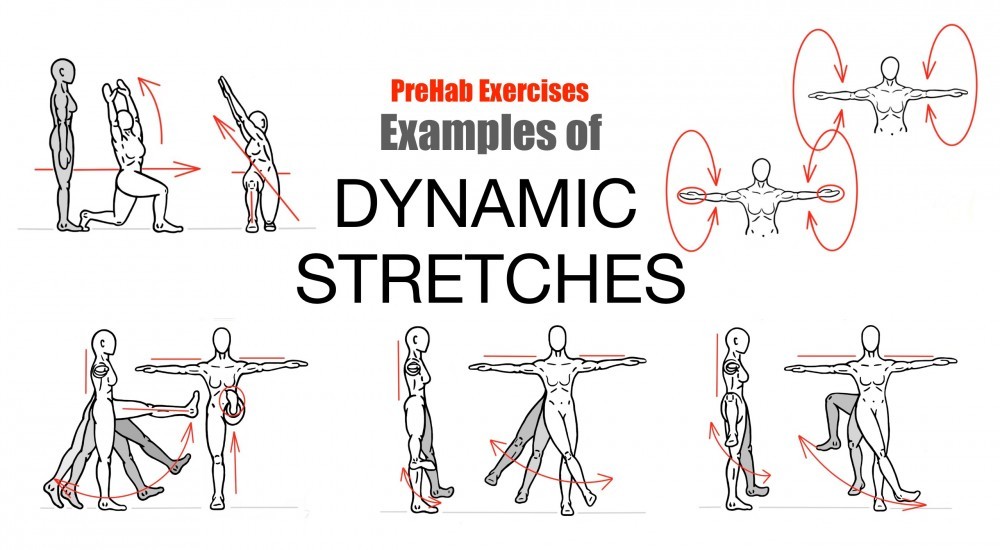
STATIC STRETCHES AFTER EXERCISE
Okay, we know not to do static stretches before exercise or in lieu of a warm – up. Healthy stretching afterwards is to sensibly use guidelines to avoid tears, pulls or strains. Static stretching is to gently move a joint or a muscle to its full extension and to hold for up to 30 seconds.
The goal is greater flexibility or increased range of motion. Mild to moderate stretching will help to prevent soreness. The stretch should be stopped just before the point of discomfort and begun with gentleness.
We should breathe into the stretch and relax during the hold. “No pain, no gain” definitely does not apply here. Holds are not indefinite and “bouncing” to increase the stretch is strongly discouraged.
Static stretching should only be done when the muscles are pliable. This would ideally be after a warm – up, aerobic routine or hot bath.
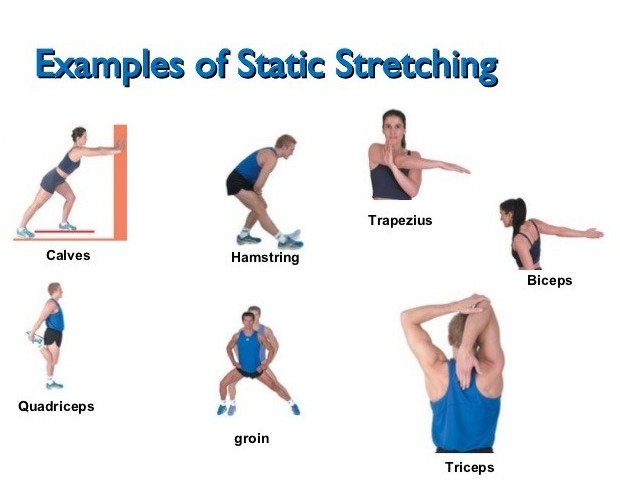
CHEST STRETCH
- Begin with arms hanging by your sides and shoulders pressed down away from your ears.
- Gently press your shoulder blades together, broaden the chest and then bring the arms behind the back and grip elbow to elbow.
- Hold for 15 – 30 seconds, repeat 2-3 times. Gently increase the tension for each repetition, but not to the point of pain.
QUADRICEPS STRETCH
The quadriceps is the major thigh muscle. Begin with the knee bent and the thigh positioned in front of the body. This places the foot under the hip, making it easier to reach.
Then gently pull up on the foot which will take the slack out of the quadriceps. Maintain the tension and bring the thigh to a comfortable stretch.
Don’t try to place the thigh all the way behind your body. Think only of a nice productive stretch.
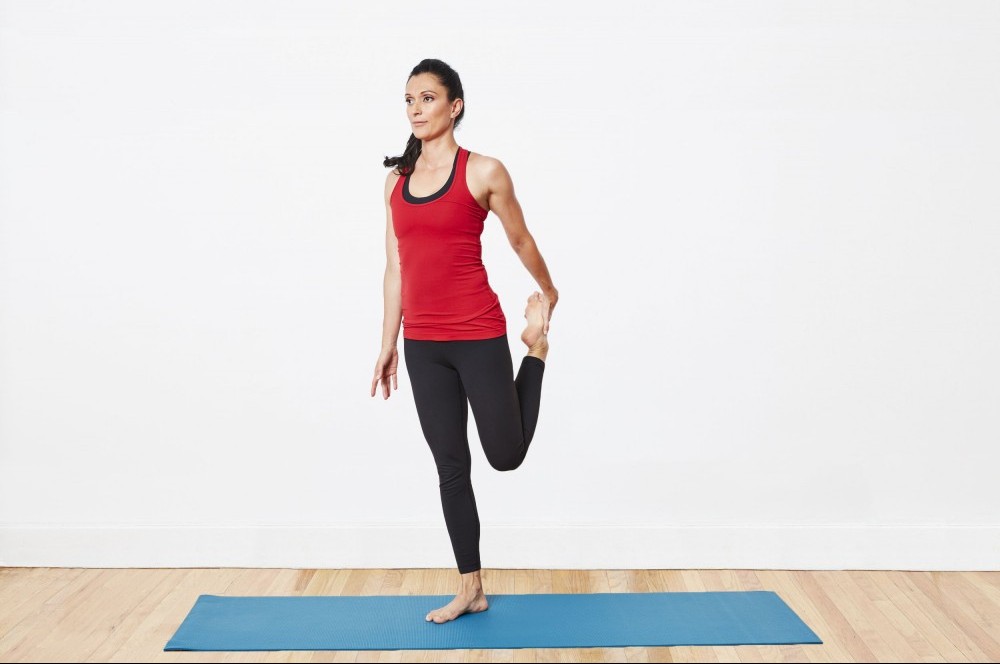
TRICEPS STRETCH
- Raise your left elbow and reach for your upper back
- Point your left elbow upward and touch your back with your left hand
- Gently pull your left elbow with your right hand – back and toward your right side
- Feel the stretch in your left triceps, but don’t pull your arm past its natural range of motion
- Hold the stretch for about 30 seconds, if this is comfortable
- Switch arms so as to stretch the right triceps

CALF STRETCH
Stand about 3 feet from a wall with your right foot behind you, toes facing forward.
Keep your heel on the floor and lean forward with your right knee straight.
Rotate the toes in and out to separately engage the medial and lateral parts of the major calf muscle, the gastrocnemius.
Hold for 30 to 60 seconds and then repeat the routine with the left foot behind and left knee straight.
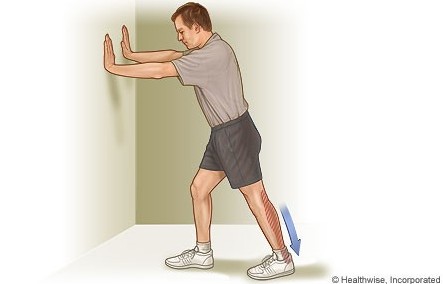
HAMSTRING STRETCH
Lie on your back with one knee bent and the other leg straight. Slowly lift the leg (with bent knee) upward. Use a towel if you like.
Flex the hip joint to allow this to happen. Raise your leg until it is pointing to the ceiling.
Do not allow the bottom of your pelvis to rise up as you are pulling your leg up. This will isolate your hamstring muscle.
Hold the tension on your hamstring for 5 to 30 seconds. Start slowly and increase hold times and sets for both legs as you progress.
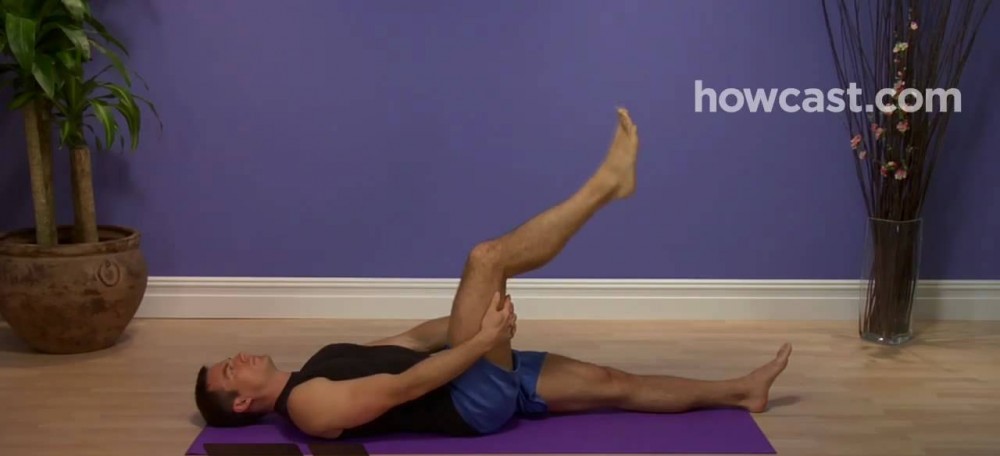
BICEPS STRETCH
- Clasp your hands behind your back with your palms together.
- Straighten your arms and then rotate them until your palms face downward.
- Raise your arms up and hold until you feel a stretch in your biceps.
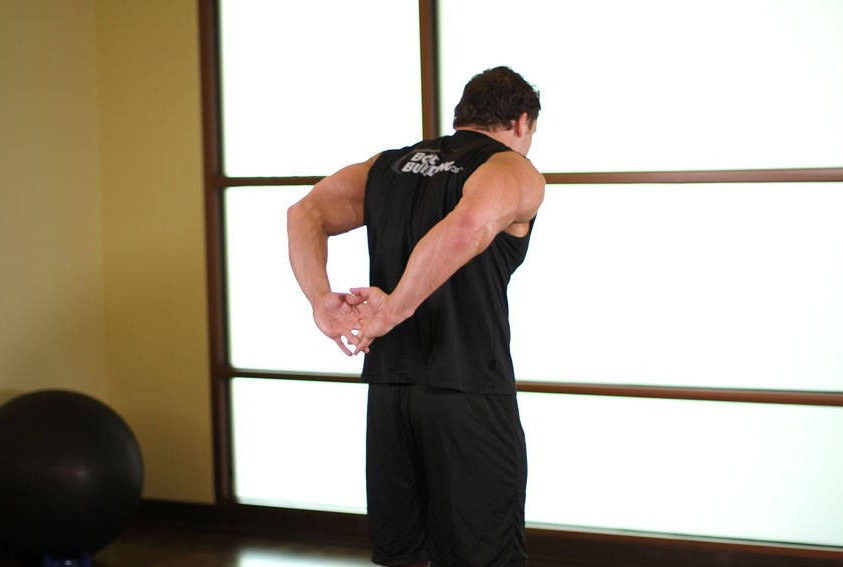
LUMBAR STRETCH
- Lie flat on your back
- Cross one leg over the other by twisting your hips and spine
- Keep your opposite arm outstretched
- Hold onto your foot or knee to make the stretch stronger
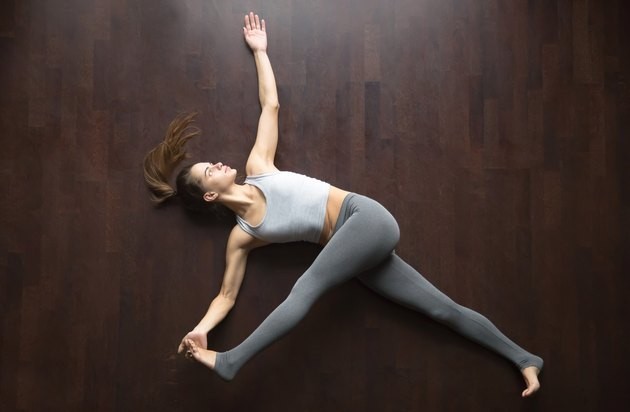
KNEES TO CHEST FOR BACK PAIN
- Lie on your back
- Inhale deeply
- Bring both knees into your chest as you exhale
- Hold knees with your arms
- Maintain this position for a lengthy stretch
- Or massage your spine by circling your knees or rocking side to side
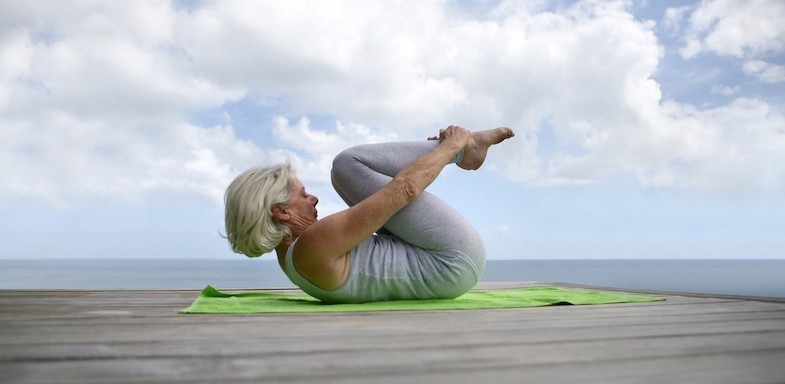
STRETCHING DEVICES
Here is a list of products from Amazon that can produce excellent results within a stretching routine – and increase the comfort level in general. As an Amazon associate, I may earn from qualifying purchases.
- Teeter Hang – ups Inversion Table
- Adjustable back, shoulder and hamstring stretcher with coaching guide
- Arched back stretcher for relief of sciatica
- Device for precise hamstring stretching
- Multi – level back stretcher
- Deluxe cervical traction kit – highly sophisticated
- Cervical neck traction device – very reasonably priced
- Posture corrector for men or women – low price
- Elliptical back rocker – a posture pump
- Plantar fasciitis foot stretcher
- Shoulder roller and stretcher – for rehab
- Calf stretcher – and multiple rehab device
- Yoga for beginners – REALLY inexpensive
- Cervical pillow – to relieve neck and shoulder pain
- Traction massage bed – please take a look at this!
IN CLOSING
Please note that there are many variations of stretching movements not shown here. The ones shown were typical stretches, widely used and proven to be beneficial if performed correctly.
It is important to halt a stretch before pain occurs. Some times just before, when tension is increased to the level of a full range of motion.
This research has certainly helped me. Best of all, it confirmed my long held view that static stretches done prior to a tennis match were useless and potentially harmful.
Please try out these stretches and take a look at what Amazon has in this vein.
Let me know if you have questions or comments. This engagement is much appreciated.
See the “Comments” box below or e-mail me – richard@myworkoutathome.com.
Be well!
